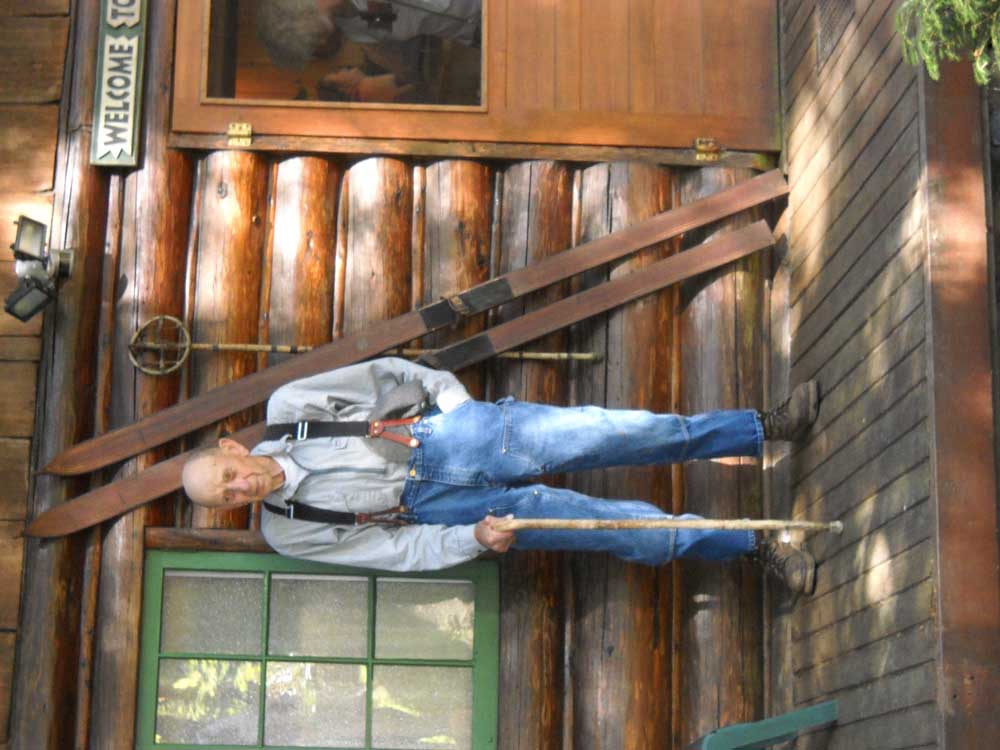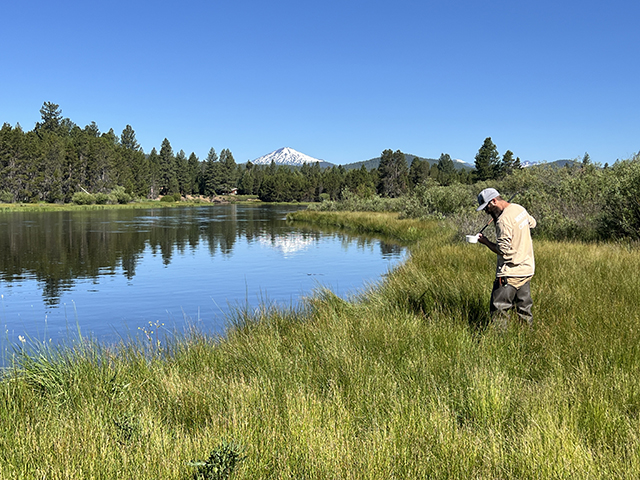cabins in the woods
Published 12:00 am Saturday, July 26, 2014

- Photo courtesy Mt. Hood Cultural Center & Museum
Nestled in the forests west of Mount Hood, around the towns of Rhododendron, Zigzag, Brightenwood and Government Camp, stand historic cabins built by Henry Steiner and his sons, Fred and John.
“John was a stone mason, but Henry was the designer,” said Lloyd Musser, director of the Mt. Hood Cultural Center & Museum.
In the mid-1920s, German born woodcraftsman Henry Steiner started building log cabins for Suzette Franzetti, former owner of the Rhododendron Inn and Tavern in the town of Rhododendron. Steiner would build a cabin, bill Franzetti for the work, and then she would double the price and sell the cabin.
Steiner used natural materials found on-site to construct the storybook-like cabins. With no power or electricity, trees were hand-hewn and peeled with hand tools. Basalt boulders and glacial rocks were crushed with sledgehammers for foundation material and fireplaces. Odd twisting trees or unique-looking roots were cut and used as curving banisters, railings or door and cabinet handles. This gave the cabins a “fairytale” like quality, and as Musser said, “Henry would brag that the only things he bought for the cabins were windows and sinks.”
Though Steiner built some cabins alone, his sons, John and Fred, worked with their dad. Henry made John quit high school at age 15 to come with him, something John regretted throughout his life. Sometimes the other 11 children and Steiner’s wife would also help peel logs or collect rocks.
“The museum has fully documented 88 cabins, including two churches, built by the Steiners,” said Musser. “However, John in his later years would say they built 100.”
John Steiner passed away in 2012 at the age of 99. The museum had worked with John to develop a record of the cabins; however, several had burned down and some were moved during highway construction near Government Camp. Several cabin owners have denied the museum access to authenticate the construction, so the “official number” stands at 88. After Henry’s death in 1953, John continued working as a master craftsman and stone mason. However, he didn’t build any more log cabins because he “considered them too much work,” according to Musser.
The Modern Craftsman
“I may have grown up in a Steiner cabin without even knowing it,” said Michael Weeks, owner of Bend Log Homes. Weeks’ dad had purchased and finished a log cabin in Cherryville along the Mt. Hood Highway. Weeks believes that John Steiner lived in the vicinity at that time, but he had no idea then who Steiner was.
Weeks’ dad acquired old hand tools at neighborhood garage sales while working on the cabin.
“This one guy said he wouldn’t sell them to my dad unless he was going to use them for what they were intended for,” recalled Weeks.
Ironically, Weeks, whose business is restoring historic log cabins, is now working on a Steiner cabin and may be using some of Steiner’s tools including broadaxes for hewing trees, drawknives for peeling logs and inshaves for shaping spindles and railings.
“I built my first log cabin with my brother when I was 10 years old,” said Weeks. “We went up into the woods behind our house and built it there.”
Later, as a teenager, Weeks worked for his dad, a remodeling contractor, on huge, old three-story Victorian homes in Portland. Weeks loved the homes with their intricate woodwork and unique designs.
Weeks moved to La Pine when he was 17. Someone asked him to build a spiral staircase out of logs, which he had never done.
“I just did it,” explained Weeks, adding that he thinks his problem-solving abilities stemmed from designing Legos structures with his brother, then rolling them down the stairs.
“Whoever’s was more intact, won,” he said.
This creative ingenuity would have set well with Henry Steiner.
Living in La Pine, Weeks developed a desire to build log homes when he was 18. He worked for Northwest Custom Log Homes, and then obtained his own contractor’s license a few years later. Now, the laid back craftsman advertises himself as a Northwest log home repair specialist, but he considers his work more “rebuilding than restoration.”
Due to the difficulty and time consuming nature of raising an old cabin and repairing mostly rotten logs, Weeks said there are few others that take on this type of work, especially when trying to maintain a historical appearance.
Weeks’ intersection with the Steiners happened about a year and a half ago when private cabin owners in the Mount Hood area started calling to have repairs done. Most of the work required raising the cabins with floor jacks and repairing lower courses of rotten logs. After replacing the logs, the original structure is lowered and secured to the new logs. Suddenly, Weeks’ connection to the Steiners as neighbors, wood craftsman and masters of the Oregon Rustic style of architecture came into focus when he started working on their creations.
“Henry Steiner was a pretty creative guy and ahead of his time as far as artisan and functional woodwork,” said Weeks. “My artistry is in more engineering. Someone called me a ‘freelance engineer,’ and I have to be.”
For instance, instead of rebuilding a chimney that is leaning, Weeks will use ropes and pulleys to right the structure while keeping the original material in place. He uses a mix of modern and old tools depending upon the situation.
“I usually work on one place a year,” said Weeks, explaining that his work sites are often impacted by snow levels.
Working with Boundaries
Weeks compensates for his lack of formal engineering training with building experience and an understanding of old-world craftsmanship. He describes restoring a cabin using same-dimension materials then tying them into an existing structure and have them blend as being a lot like solving a puzzle.
“I have to work within the bounds of somebody’s creative nature and that is a challenge,” he said.
Many cabins have already had upgrades and been modernized with power and water, so he recreates original construction where possible.
“One thing I really love is that many of these cabins are set on lakes or rivers, without setbacks, and often in incredible locations,” Weeks said.
Weeks is currently working in Zigzag on a two-story Steiner cabin, his third Steiner project. The Steiners also built cabins in Sandy and worked on the construction of Timberline Lodge from 1936 to 1938. Though Weeks would like to work on an “unchanged” Steiner cabin — one where everything is original — they are extremely rare. But for someone who appreciates log construction challenges and the wild places where these cabins stand, that is enough satisfaction.
The Mt. Hood Cultural Center and Museum will be offering a self-guided tour of several Steiner cabins in the Government Camp area on Aug. 9. With a bike friendly option, these “little cabins in the woods” should enchant visitors with their rustic charm and bring to light this period of Mount Hood history.
For more information, visit www.mthoodmuseum.org or www.bendloghomes.com.








